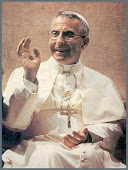This just in from National Survivor Advocates Coalition (NSAC) News (thanks to William Lindsey at Bilgrimage for the link to this at Voice from the Desert Blog)
Received from A. W. Richard Sipe
Pope Benedict XVI is a good man. He has served the Church long and well. It takes nothing away from his goodness to suggest that he should resign his office. Nine of his predecessors have resigned, most for the good of the Church. The clerical sex abuse crisis that now exposes a corrupt pattern and practice of a system has escaped and confused many good, brilliant people and left generations paralyzed. There is no need to point fingers.
However, the Roman Catholic Church is in a period of Reformation as profound (and breathtaking) as any its history has ever recorded. The voluntary resignation of Pope Benedict XVI would be a gesture that would match the epic challenge that faces Catholicism today. Such leadership would break the pattern and practice that holds the church hostage to a past that no longer serves the Christian message. The monarchy that rules the church has outlived its service in the evangelization of peoples, an evangelization that Paul the apostle taught and that Pope John Paul II championed. The People of God, hierarchy included, are shackled by a secret system designed to control rather than free them.
Whether or not Benedict's resignation is a real possibility in the near future and quite apart from the issue of who might succeed him (Cardinal Levada?), just to see such a statement presented from such a distinguished voice is uplifting indeed. However, I was particularly struck by the following comment/response to the above statement by Tom Barnes at Voice from the Desert Blog. A bleak and pessimistic statement. to be sure, the conclusion of which I do not share, but sometimes the harsh reality of the situation needs to be presented in it's starkest terms before we get the point.
With all due respect to a good and decent man, Richard Sipe, we are well beyond the stage now where the Pope’s resignation would mean anything substantial to a world hungering for a Cosmic Christ to take hold, Teilhard de Chardin’s vision of life’s human meaning and Christianity’s purpose. What we actually need is less ‘catholic church’ and more Cosmic Christ. The question is, how do we do that?
Hint: Do not look to me. I have no idea how to implement this. Maybe let the Holy Spirit work in our lives for once?
The Catholic Church has proven itself to be….how shall I say this?….meaningless in the general flow of modern human discourse on values and ethics. It is seen by most educated people on the planet as quaint, trite and perhaps a bit odd. It allows child rape en masse for millenia and then tries to blame the Fourth Estate for the crisis….or it blames ‘modern values’ degeneration…or it blames Protestants or Masons or disenfranchised former Catholics for the problems it is now facing.
In fact, the Catholic Church and Chrisitanity as a whole is more or less passe. We don’t matter anymore. That is our fault. This was a long time coming. The sex abuse crisis in Catholicism is simply a symptom of deeper problems that probably stem all the way back to the very beginning of the Jesus Movement. Perhaps our time has come….and gone. We have to be open to that possibility.
When we have arrived at the point where children are raped as a matter of course by nuns and priests and brothers and bishops and then evidence is hidden by the powers that be, we have given up all call as a group to anything even resembling holiness. Lets not add hypocrisy to this tragedy.
Lets take a look at ourselves, at Christianity, and see it for what it is: a quaint myth based on Hellenized, apocolyptic Judaism of Second Temple Judaism under the Romans and be open to the possibility that it is a value system that no longer works.
Changing popes won’t change any of this. We need to be realistic.
Tom Barnes
Pope Benedict XVI is a good man. He has served the Church long and well. It takes nothing away from his goodness to suggest that he should resign his office. Nine of his predecessors have resigned, most for the good of the Church. The clerical sex abuse crisis that now exposes a corrupt pattern and practice of a system has escaped and confused many good, brilliant people and left generations paralyzed. There is no need to point fingers.
However, the Roman Catholic Church is in a period of Reformation as profound (and breathtaking) as any its history has ever recorded. The voluntary resignation of Pope Benedict XVI would be a gesture that would match the epic challenge that faces Catholicism today. Such leadership would break the pattern and practice that holds the church hostage to a past that no longer serves the Christian message. The monarchy that rules the church has outlived its service in the evangelization of peoples, an evangelization that Paul the apostle taught and that Pope John Paul II championed. The People of God, hierarchy included, are shackled by a secret system designed to control rather than free them.
Whether or not Benedict's resignation is a real possibility in the near future and quite apart from the issue of who might succeed him (Cardinal Levada?), just to see such a statement presented from such a distinguished voice is uplifting indeed. However, I was particularly struck by the following comment/response to the above statement by Tom Barnes at Voice from the Desert Blog. A bleak and pessimistic statement. to be sure, the conclusion of which I do not share, but sometimes the harsh reality of the situation needs to be presented in it's starkest terms before we get the point.
With all due respect to a good and decent man, Richard Sipe, we are well beyond the stage now where the Pope’s resignation would mean anything substantial to a world hungering for a Cosmic Christ to take hold, Teilhard de Chardin’s vision of life’s human meaning and Christianity’s purpose. What we actually need is less ‘catholic church’ and more Cosmic Christ. The question is, how do we do that?
Hint: Do not look to me. I have no idea how to implement this. Maybe let the Holy Spirit work in our lives for once?
The Catholic Church has proven itself to be….how shall I say this?….meaningless in the general flow of modern human discourse on values and ethics. It is seen by most educated people on the planet as quaint, trite and perhaps a bit odd. It allows child rape en masse for millenia and then tries to blame the Fourth Estate for the crisis….or it blames ‘modern values’ degeneration…or it blames Protestants or Masons or disenfranchised former Catholics for the problems it is now facing.
In fact, the Catholic Church and Chrisitanity as a whole is more or less passe. We don’t matter anymore. That is our fault. This was a long time coming. The sex abuse crisis in Catholicism is simply a symptom of deeper problems that probably stem all the way back to the very beginning of the Jesus Movement. Perhaps our time has come….and gone. We have to be open to that possibility.
When we have arrived at the point where children are raped as a matter of course by nuns and priests and brothers and bishops and then evidence is hidden by the powers that be, we have given up all call as a group to anything even resembling holiness. Lets not add hypocrisy to this tragedy.
Lets take a look at ourselves, at Christianity, and see it for what it is: a quaint myth based on Hellenized, apocolyptic Judaism of Second Temple Judaism under the Romans and be open to the possibility that it is a value system that no longer works.
Changing popes won’t change any of this. We need to be realistic.
Tom Barnes


















 Leviticus International says that straights can be “born again” as gay with the help and love of Jesus Christ. Joseph “Bo” Kelly, of Las Vegas, NV, a former heterosexual, claims it worked for him. According to Kelly, his compulsive attraction to women led him to two suicide attempts. “Now that I’m gay, my life is divine, and I don’t mean in the biblical sense. My boyfriend and I share so much more than I ever did with any of my four ex wives. I thank God for taking that sinful disorder away from me.”
Leviticus International says that straights can be “born again” as gay with the help and love of Jesus Christ. Joseph “Bo” Kelly, of Las Vegas, NV, a former heterosexual, claims it worked for him. According to Kelly, his compulsive attraction to women led him to two suicide attempts. “Now that I’m gay, my life is divine, and I don’t mean in the biblical sense. My boyfriend and I share so much more than I ever did with any of my four ex wives. I thank God for taking that sinful disorder away from me.”













